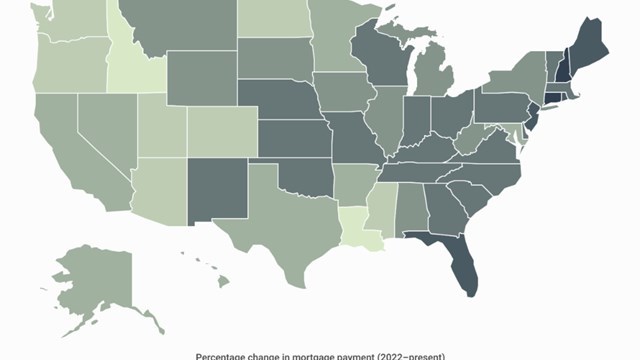New Yorkers looking for a little more living space have a lot of options these days. Construction on new co-op and condo buildings–as well as conversions–are moving along at a steady pace, while the recent economic downturn has made New York City real estate something more closely resembling a buyer’s market than has been seen in some time. Prices are dropping while availability is increasing. Couple that with low interest rates, and developers are seeing a steady stream of new customers for their latest co-op and condo offerings.
"It’s been a surprisingly strong market," says Izak Senbahar, developer of the new Grand Beekman luxury high-rise at 400 East 51st Street. "For eight weeks or so after September 11, traffic was down, but since Christmas and especially in the last few weeks, things have come back. If you have a good product and good location, the people are out there and willing to buy."
Choices, Choices
Whether a buyer is searching for trendy elegance, high-rise luxury, or a moderately priced family dwelling, the market is offering an uncharacteristic wealth of new choices. The 32-story Grand Beekman, designed by architect Costas Kondylis, began construction in August 2001, marking the first new luxury tower construction in Beekman Place in more than a quarter of a century. "This corner needed a new building–and this really meshes with the fabric of Beekman Place," Senbahar says. "It has a pre-war look. The colors are the same as other original buildings in the area. It’s going to look like it belongs here."
The building’s 89 units will be comprised of one- to four-bedroom apartments with views of the city’s skyline and the East River. Senbahar says inquiries are coming fast and furious. "The product has been very well received," he says. "We spent a lot of time choosing the right materials. The building has an Old World charm with New World amenities."
Ongoing interest in the Beekman also stems from the building’s central location in one of New York’s prime neighborhoods. "It’s an enclave, a very residential, quiet enclave," Senbahar says. "But at the same time, it’s in the middle of downtown, with shopping, offices and restaurants nearby. The area speaks for itself."
Grand Beekman units are slated to sell for between $575,000 and $4.75 million with occupancy scheduled for this fall.
The Upper West Side’s new condo conversion, 43 West 64th Street, offers something never before seen in the area. "It’s the first project on the Upper West Side to truly incorporate loft living," says Louis Dubin, CEO of The Athena Group, which developed the project. "We were able to take the old Liberty Warehouse and give it a lot of loft features. Certain buyers appreciate non-delineated living." The building also houses traditional apartments.
Filling an entire block, the old warehouse offers some unique amenities, including a drive-through area that allows residents to pull in off of 64th Street and hand their car over to a valet service. The building also features a concierge doorman, live-in building manager and a stellar location. "The location is the amenity," Dubin says. "We’re less than half a block from Lincoln Center–two blocks from some of the world’s best restaurants. 64th Street between Broadway and Central Park is the epicenter." Units in the new conversion will run between $1 million and $4 million with penthouses going for between $5 million and $10 million.
Other upscale additions to the Manhattan landscape include a new 32-unit condo complex at 79 Laight Street known as "The Sugar Warehouse," which is set to open its doors next month. Converted from a mid-19th century warehouse, the building features two- and three-bedroom duplexes with 16-foot ceilings, gourmet kitchens and marble baths. Units are selling for between $1.46 million and $4.4 million.
Also offering loft condos in a similar price range–and also set to open next month–is a new six-story complex at 53 Leonard Street in Lower Manhattan. Each floor, including the penthouse, is one unit, offering maximum privacy as well as unbeatable natural light on three sides of the building. All that light and quiet will cost interested parties between $1.55 million and $4.2 million.
Where It’s At
Although new construction and conversions are taking place throughout the city, downtown Manhattan in particular is undergoing a whirlwind of activity. In the last year, the Insignia Douglas Elliman brokerage firm has represented several new and converted buildings in the East Village, SoHo and TriBeCa. Occupants began moving in this past month at the new Solita Building at 161 Grand Street. Previously known as the Trumbull Building, the ten-story structure was recently converted into a luxury condo loft residence with 16 two- and three-bedroom units selling in the $900,000 price range.
Brooklyn is also seeing its share of construction and conversion. The Williamsburg Mews at 100 Havemeyer Street already has sold two-thirds of its 24 units, with move-in not scheduled until the end of April. "The purchasers are coming from Manhattan or the surrounding neighborhoods of Brooklyn, where they have been renting," said Insignia’s executive vice president Helene Luchnick in a recent statement. The area is benefiting from a 25-year tax abatement, meaning monthly common charges and apartment taxes will be no more than $130–which in turn adds up to a significant savings over rental costs.
No longer just the turf of trendy artists, Williamsburg has become a magnet for young families in search of affordable space. "This paints an interesting demographic profile for further residential development in Williamsburg," Luchnick says. "I’m urging the developers I work with to concentrate on two- and three-bedroom apartments in their layouts in order to accommodate growing families."
A Resilient Market
What accounts for the steady rate of purchase in New York real estate? Dubin attributes it to three important factors: pricing, availability and selection.
In the last year or so–and particularly since last fall–prices have dropped between 10 and 20 percent in the city, depending on location and original dollar range, Dubin says. "The market is very strong for properties between $750,000 to $2 million," he says. "But the $2 million to $5 million range is slower than it was. We’re looking at an overall downward turn of around ten percent."
Individuals and families who have only rented in the past are looking at these reduced prices with great interest, especially in light of the fact that while purchase prices have leveled a bit, rental rates have not decreased. With interest rates low, buyers are enjoying significant savings over what they’re used to shelling out for rent. They’re also reaping the benefits of substantial tax breaks at the end of the year.
Availability and some freedom of choice appeals to the average buyer as well. "There’s a lot of selection right now," Dubin says. "You can have any chocolate you want. The sampler box is open."
The less-cutthroat market may be due–at least in part–to the repercussions of September 11. "I think there was a population that threw its arms up after September, who said, ‘Forget it, I’m moving to the suburbs,’" Dubin says. "They’re going to take that $1.5 million they would normally pay for an apartment, and instead buy a house in the country. But at the same time, there were also people who dug in their heels and decided no one was going to drive them away. I have a feeling, though, that we lost more than we gained."
Senbahar believes the unpredictable nature of the stock market has actually helped steady real estate sales. "The volatility has made real estate a safe haven," he says. "The rewards may be lower, but the risks are a lot lower, too. People want to own things they can touch, things whose value will stay."
And few things are as valuable as real estate in New York City. The market has certainly had its share of ups and downs, but no matter how bleak the outlook, it’s always come back, and always come back stronger than ever. The relative stability here in the city, even in light of the events of 2001, is a testament to New York’s resilience, fortitude, and optimism.
Liz Lent is a freelance writer specializing in real estate.






Leave a Comment